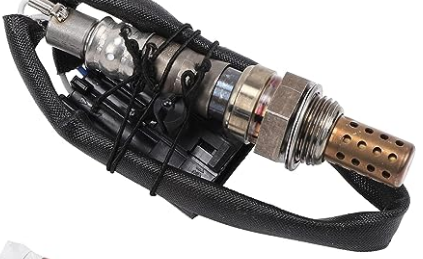Your cart is currently empty!
How do I test the o2 sensor? Test o2 sensor method
Greetings to all automotive enthusiasts and inquisitive minds seeking to demystify the world of vehicle diagnostics! In the intricate landscape of engine performance and emission control, one component stands out—the O2 sensor. Often abbreviated for its role in monitoring oxygen levels, this sensor plays a pivotal part in engine efficiency. This article unveils the step-by-step process to test the o2 sensor, providing you with insights into ensuring your vehicle operates at its optimal potential.

Understanding the Importance of test the o2 sensor
A Vital Role in Engine test the o2 sensor
The O2 sensor, also known as the oxygen sensor, is a crucial component responsible for monitoring the oxygen content in the exhaust gases. This data is communicated to the engine control module (ECM), which adjusts the air-fuel mixture for efficient combustion. test the o2 sensor is essential for diagnosing potential issues, optimizing engine performance, and minimizing harmful emissions.
Step-by-Step Guide to test the o2 sensor
Preparation and Safety Measures
Begin by ensuring your vehicle is parked on a level surface, the engine is turned off, and the parking brake is engaged. Safety goggles and gloves are recommended to protect yourself during the process.
Locating the O2 Sensor
Refer to your vehicle's manual to identify the location of test the o2 sensor. Typically, there are one or more sensors positioned along the exhaust system.
Accessing the Sensor
Depending on the sensor's location, you may need to raise the vehicle using jack stands to access the sensor from underneath. Ensure the vehicle is properly secured before proceeding.
Disconnecting the Sensor
Use a wrench or socket set to gently disconnect the sensor from the wiring harness. Apply penetrating oil if needed to loosen any rusted connections.
Using a Multimeter
Set a multimeter to the millivolt scale and connect the positive lead to the sensor's signal wire and the negative lead to a good ground. Start the engine and allow it to warm up.
test the o2 sensor,Interpreting the Reading
A healthy O2 sensor will oscillate between low and high millivolt readings within a short time. This indicates that the sensor is rapidly switching between lean and rich air-fuel mixtures.
test the o2 sensorVerifying Results and Benefits
Interpreting Diagnostic Codes
If the O2 sensor readings are outside the normal range, it might trigger a Check Engine Light and store diagnostic trouble codes (DTCs) in the ECM. These codes can provide further insight into the nature of the sensor's malfunction.
Enhanced Engine Performance
Testing and addressing a faulty O2 sensor can lead to improved engine performance, better fuel efficiency, and reduced emissions. Your vehicle will operate in a harmonious balance of combustion efficiency, resulting in smoother acceleration and optimized power delivery.
Conclusion
In conclusion, test the o2 sensor is an endeavor that combines curiosity and automotive knowledge. By following this comprehensive guide, you're taking a proactive step toward diagnosing potential issues and optimizing your vehicle's performance. Remember, the O2 sensor is a sentinel of combustion efficiency, ensuring your vehicle operates responsibly and efficiently. Embrace the mechanics of diagnostics, and drive on with confidence, knowing that your vehicle's engine performance is guided by the precision of a thoroughly tested O2 sensor.






Leave a Reply